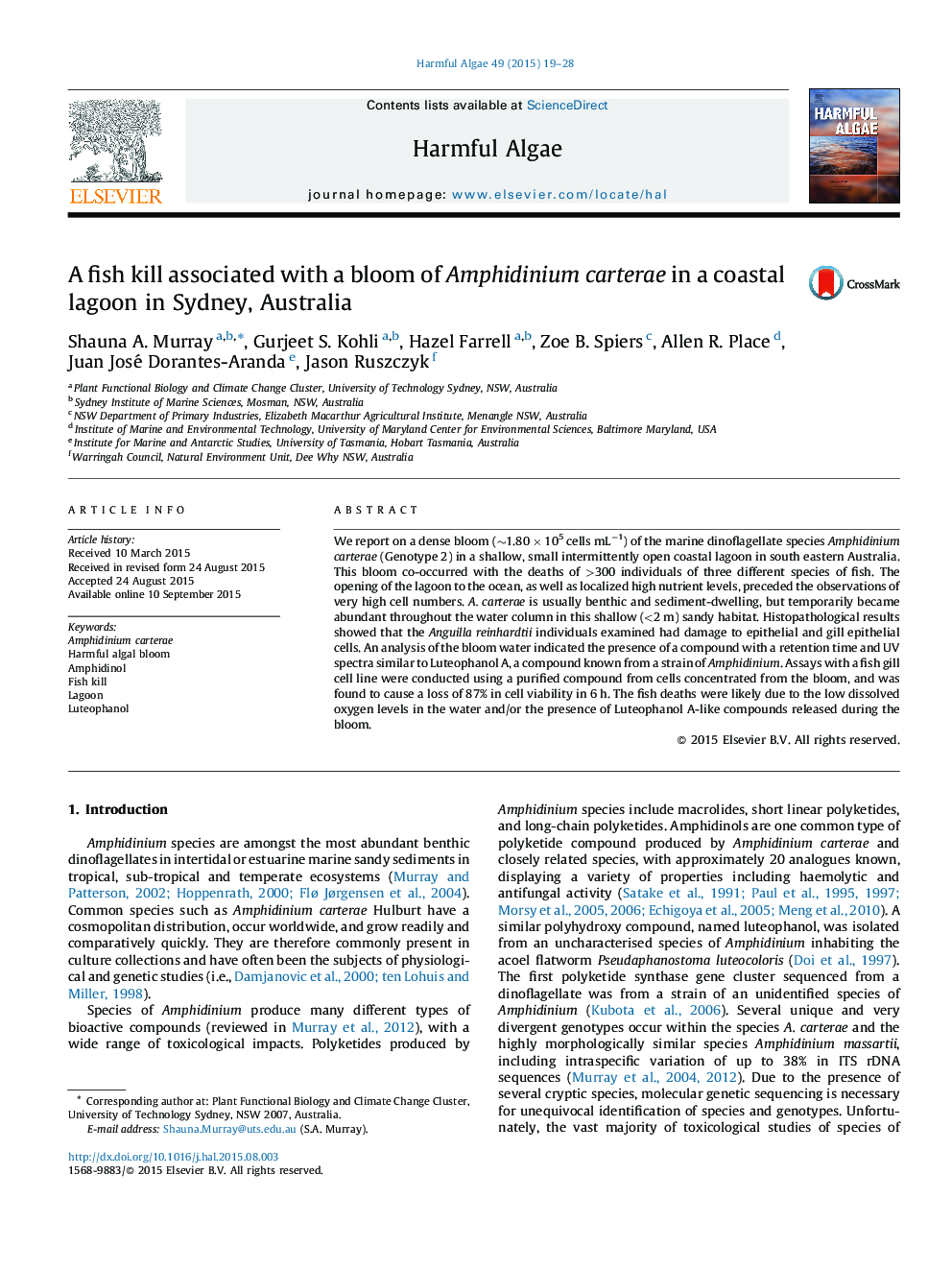| Article ID | Journal | Published Year | Pages | File Type |
|---|---|---|---|---|
| 4545215 | Harmful Algae | 2015 | 10 Pages |
We report on a dense bloom (∼1.80 × 105 cells mL−1) of the marine dinoflagellate species Amphidinium carterae (Genotype 2) in a shallow, small intermittently open coastal lagoon in south eastern Australia. This bloom co-occurred with the deaths of >300 individuals of three different species of fish. The opening of the lagoon to the ocean, as well as localized high nutrient levels, preceded the observations of very high cell numbers. A. carterae is usually benthic and sediment-dwelling, but temporarily became abundant throughout the water column in this shallow (<2 m) sandy habitat. Histopathological results showed that the Anguilla reinhardtii individuals examined had damage to epithelial and gill epithelial cells. An analysis of the bloom water indicated the presence of a compound with a retention time and UV spectra similar to Luteophanol A, a compound known from a strain of Amphidinium. Assays with a fish gill cell line were conducted using a purified compound from cells concentrated from the bloom, and was found to cause a loss of 87% in cell viability in 6 h. The fish deaths were likely due to the low dissolved oxygen levels in the water and/or the presence of Luteophanol A-like compounds released during the bloom.
